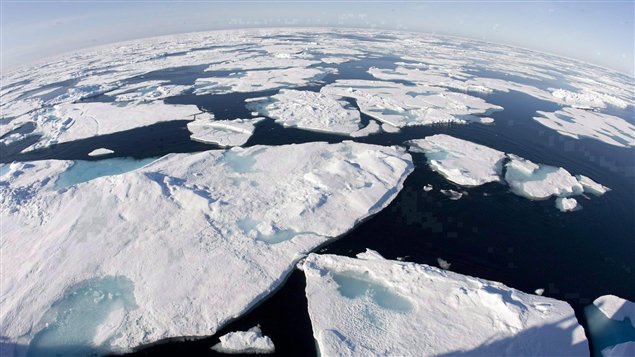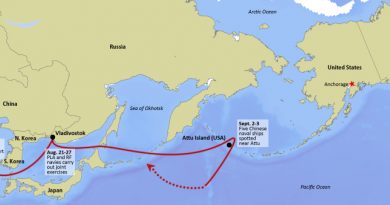Canadian to retrace 1913 Arctic expedition

A ship drops anchor in the Beaufort Sea, high in the Canadian Arctic. A group of scientists disembark to map the surrounding area and study the ice and flora and fauna. It may sound like 2013, but these events actually took place 100 years ago.
In 1913, the Canadian Arctic Expedition (CAE) set off to study and explore the lands and waters in the north of Canada. The CAE took two routes, with the Northern Party voyaging to Banks Island and the Beaufort Sea while the Southern Party sailed in and around Coronation Gulf. The Northern Strategy website proclaims that the five-year expedition “marked a significant turning point in Canada’s Arctic territorial history and helped shape Canada into a nation, strong and free.”
As might be expected, Canada’s Prime Minister Stephen Harper’s government is heavily promoting the 100th anniversary of what Virtual Museums Canada calls the expedition “the most important exploration of northern Canada” and an “exceptionally important event in our history.” The Royal Canadian Mint is producing commemorative coins, while Canada Post may issue commemorative stamps. The Canadian Museum of Nature in Ottawa has set up a special exhibition on the specimens of flora collected by the CAE. Canadian newspapers like the Vancouver Sun are rallying around the anniversary, promoting the nation’s collective recollection of the CAE.
Yet as with many supposed national legends, the CAE does not fit into as neat a narrative as the Vancouver Sun might suggest. First, the newspaper reports that the expedition’s leader, Vilhjalmur Stefansson, was born in Manitoba. But the article fails to mention that Stefansson was actually raised and educated in the United States. His family moved to North Dakota when he was one, and his father became a U.S. citizen in 1887, which consequently made young Vilhjalmur an American, too, due to the laws of the day. Yet when Steffanson took the helm of the CAE in 1913, he implied that he had never lost his status as a Canadian and equally as a British subject. Steffanson’s citizenship is not a cut-and-dry issue of being American or Canadian, and two Canadian researchers argue that from 1913 to 1937, when he officially became an American again, he was a citizenship-less man rather than a valiant Canadian raising the Union Jack in the Beaufort Sea.
Second, the newspaper fails to mention that at its inception, the CAE was an American-sponsored expedition. (The Ottawa Citizen, by contrast, paints a fuller picture of the story). Stefansson only turned to the Canadian government when he felt that the funding from organizations such as the American Museum of Natural History and National Geographic would not be enough. The Canadian government then agreed to cover all costs with the goal that any new lands discovered would then fall within its domain. So a voyage that arguably bolstered Canadian Arctic sovereignty was not the brainchild of anyone in Ottawa or London – nor even necessarily a Canadian.
The Northern Strategy website mentions that the CAE was the first “major multinational” study of the Arctic. Yet the overarching themes of narratives about the CAE underscore sovereignty and nationalism. These focuses overshadow the multinational nature of the expedition, which had scientists from universities in Scotland, England, the U.S., and Canada, on board. Even more than that, perhaps the expedition did not fit neatly into national lines, as the confusion with regard to Steffanson’s nationality reveals. An alternate promotion of the CAE could have showcased it as a human endeavor rather than a Canadian one.
A century after the CAE, David Gray, an Ottawa-based biologist, researcher, and filmmaker, has proposed to retrace the original voyages. Although his journeys would be privately funded, they recall Parks Canada’s numerous expeditions since the 1980s to find the John Franklin Arctic expedition’s lost Erebus and Terror ships, both of which disappeared in 1845. Adriana Craciun has an excellent article on the continuing search for the vessels and their importance to Canadian sovereignty. She concludes, “Franklin’s is a dangerous legacy, and its waste and destruction should be part of Canada’s “as yet undiscovered national historic site.” By making this disaster useful, redeemable, knowable, heroic and accessible to visitors, we undo the most enlightening aspect of the Franklin disaster, which remains its tragic uselessness.”
Perhaps the same should be done with the CAE, which has its own lamentable history of loss of life. One of the expedition’s ships, the Karluk, sank near Wrangel Island, Russia in 1914. Although everyone survived the ship’s initial sinking, eight crewmembers died while trying to reach land. Another two died due to starvation and gunshot wounds. Gray, the leader of the new expedition to retrace the CAE, at least acknowledges the inherent tragedy of the CAE. He said to Postmedia, “It’s a tragedy that so many people died…But on the other hand, the accomplishments were tremendous. They opened a whole new window on the Arctic.” But is a new expedition to find the bones of one of the CAE’s captains, Peter Bernard, and bags of undelivered mail really necessary, or is it more an exercise (however privately-led) in Arctic posturing?
Exploring the polar regions remains a risky business despite modern scientists and adventurers using advanced technologies and taking high precautions. Voyages to the Arctic are more than technical instruments of enhancing sovereignty, studying sea ice, and measuring the depth of the ocean. They’re also human endeavors. With that comes human heroics, and, sometimes needlessly, all-too-overlooked human tragedy.



